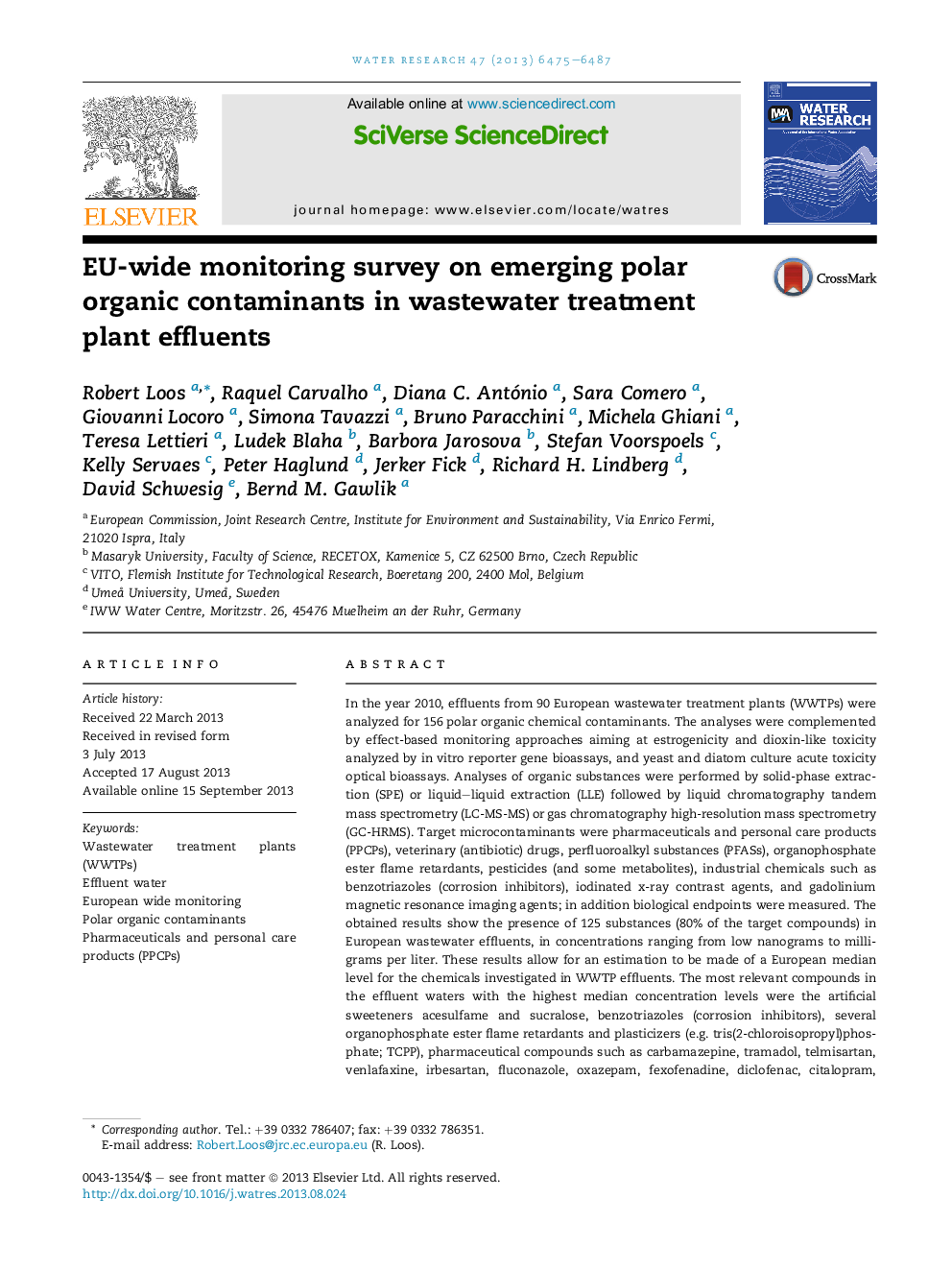| کد مقاله | کد نشریه | سال انتشار | مقاله انگلیسی | نسخه تمام متن |
|---|---|---|---|---|
| 4481899 | 1316840 | 2013 | 13 صفحه PDF | دانلود رایگان |

• Effluents of 90 European wastewater treatment plants analyzed for 156 micropollutants.
• Largest EU wide monitoring survey on WWTP effluents ever performed in Europe.
• Organophosphate esters, pharmaceuticals, antibiotics, perfluoroalkyl substances.
• Artificial sweeteners, benzotriazoles, pesticides.
• Effect-based monitoring approaches applied.
In the year 2010, effluents from 90 European wastewater treatment plants (WWTPs) were analyzed for 156 polar organic chemical contaminants. The analyses were complemented by effect-based monitoring approaches aiming at estrogenicity and dioxin-like toxicity analyzed by in vitro reporter gene bioassays, and yeast and diatom culture acute toxicity optical bioassays. Analyses of organic substances were performed by solid-phase extraction (SPE) or liquid–liquid extraction (LLE) followed by liquid chromatography tandem mass spectrometry (LC-MS-MS) or gas chromatography high-resolution mass spectrometry (GC-HRMS). Target microcontaminants were pharmaceuticals and personal care products (PPCPs), veterinary (antibiotic) drugs, perfluoroalkyl substances (PFASs), organophosphate ester flame retardants, pesticides (and some metabolites), industrial chemicals such as benzotriazoles (corrosion inhibitors), iodinated x-ray contrast agents, and gadolinium magnetic resonance imaging agents; in addition biological endpoints were measured. The obtained results show the presence of 125 substances (80% of the target compounds) in European wastewater effluents, in concentrations ranging from low nanograms to milligrams per liter. These results allow for an estimation to be made of a European median level for the chemicals investigated in WWTP effluents. The most relevant compounds in the effluent waters with the highest median concentration levels were the artificial sweeteners acesulfame and sucralose, benzotriazoles (corrosion inhibitors), several organophosphate ester flame retardants and plasticizers (e.g. tris(2-chloroisopropyl)phosphate; TCPP), pharmaceutical compounds such as carbamazepine, tramadol, telmisartan, venlafaxine, irbesartan, fluconazole, oxazepam, fexofenadine, diclofenac, citalopram, codeine, bisoprolol, eprosartan, the antibiotics trimethoprim, ciprofloxacine, sulfamethoxazole, and clindamycine, the insect repellent N,N′-diethyltoluamide (DEET), the pesticides MCPA and mecoprop, perfluoroalkyl substances (such as PFOS and PFOA), caffeine, and gadolinium.
Figure optionsDownload high-quality image (114 K)Download as PowerPoint slide
Journal: Water Research - Volume 47, Issue 17, 1 November 2013, Pages 6475–6487